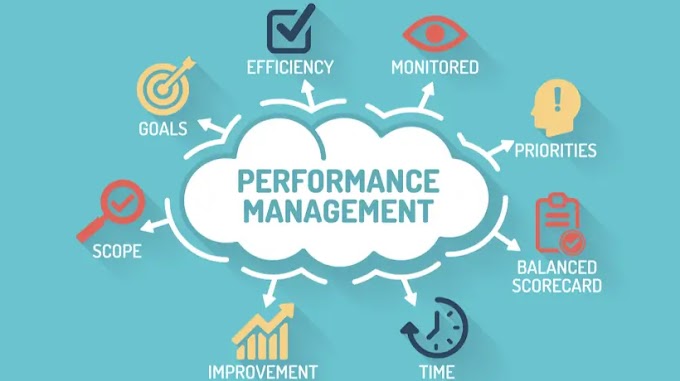Low blood pressure, also known as hypotension, is a condition that affects millions of people around the world. While high blood pressure, or hypertension, is a more well-known health concern, low blood pressure can also be a cause for worry.
In this article, we will explore the definition, causes, symptoms, prevention, and treatment of low blood pressure. We hope to provide you with a comprehensive understanding of this condition and the steps you can take to manage it.
It's important to note that low blood pressure is not always a sign of a serious medical condition. In fact, some people have naturally low blood pressure that doesn't cause any symptoms or health problems. However, if you are experiencing symptoms of low blood pressure or have been diagnosed with hypotension, it's essential to speak with your healthcare provider to determine the underlying cause and develop a treatment plan if necessary.
Low blood pressure can impact your daily life and overall health, so it's important to be aware of its potential impact. By understanding the causes and symptoms of hypotension, you can take steps to manage your blood pressure levels and reduce the risk of complications.
In the following sections, we will delve deeper into the definition of low blood pressure, how it differs from high blood pressure, and the importance of maintaining healthy blood pressure levels.
Understanding Low Blood Pressure
Blood pressure is the force exerted by the blood against the walls of the blood vessels. It's measured in millimeters of mercury (mmHg) and expressed as two numbers: systolic pressure (the top number) and diastolic pressure (the bottom number). Systolic pressure is the pressure in the arteries when the heart beats, while diastolic pressure is the pressure in the arteries when the heart is at rest between beats.
Normal blood pressure levels typically fall within the range of 90/60 mmHg to 120/80 mmHg. Blood pressure that is consistently lower than this range is considered low.
Low blood pressure can have a variety of causes, including certain underlying medical conditions, medications, dehydration, and nutritional deficiencies. It's important to note that what is considered "low" blood pressure varies depending on the individual, their age, and other factors. Some people may experience symptoms of low blood pressure even if their blood pressure is still within the normal range.
Maintaining healthy blood pressure levels is important because it helps ensure that your organs and tissues are receiving the oxygen and nutrients they need to function properly. Chronic low blood pressure can lead to inadequate blood flow to the heart, brain, and other organs, which can cause a range of health problems.
In order to monitor your blood pressure levels, it's important to have regular check-ups with a healthcare provider. They can measure your blood pressure and help you determine if it's within a healthy range. If you have low blood pressure or are at risk for developing it, your healthcare provider may recommend certain lifestyle modifications or medications to help manage your condition.
Causes of Low Blood Pressure
Low blood pressure, also known as hypotension, occurs when the pressure of blood flowing through the blood vessels is lower than normal. This can result in reduced blood flow to the organs and tissues of the body, which can cause a variety of symptoms.
There are many possible causes of low blood pressure, ranging from underlying medical conditions to certain medications. Here are some of the most common causes of low blood pressure:
1. Underlying medical conditions: Certain medical conditions can cause low blood pressure. These conditions include:
- Heart conditions: Conditions that affect the heart, such as heart failure or a heart attack, can cause low blood pressure. This is because the heart may not be able to pump enough blood to meet the body's needs.
- Endocrine disorders: Disorders that affect the glands that produce hormones, such as the thyroid or adrenal glands, can cause low blood pressure.
- Nervous system disorders: Disorders that affect the nervous system, such as Parkinson's disease or multiple system atrophy, can cause low blood pressure. This is because the nervous system plays a key role in regulating blood pressure.
- Diabetes: Diabetes can damage blood vessels and nerves, which can lead to low blood pressure.
- Infections: Certain infections, such as sepsis, can cause low blood pressure. This is because the body's immune response to the infection can cause blood vessels to dilate and blood pressure to drop.
- Alpha-blockers: These medications are used to treat conditions such as high blood pressure and prostate enlargement. They work by relaxing the muscles in the walls of the blood vessels, which can cause blood pressure to drop.
- Beta-blockers: These medications are used to treat conditions such as high blood pressure and heart failure. They work by slowing the heart rate and reducing the force of the heart's contractions, which can cause blood pressure to drop.
- Diuretics: These medications are used to treat conditions such as high blood pressure and heart failure. They work by increasing urine output, which can cause a decrease in blood volume and blood pressure.
- Vitamin B12: This vitamin is important for maintaining healthy blood vessels and nerves. A deficiency in vitamin B12 can cause anemia and low blood pressure.
- Folate: This nutrient is important for red blood cell production. A deficiency in folate can cause anemia and low blood pressure.
6. Genetics: Some people may be genetically predisposed to low blood pressure.
It's important to determine the underlying cause of low blood pressure in order to develop an effective treatment plan. Your healthcare provider may recommend certain tests or procedures to help determine the cause of your low blood pressure, such as blood tests, electrocardiograms (ECGs), or imaging tests.
Once the underlying cause of low blood pressure is identified, your healthcare provider can work with you to develop a treatment plan. This may involve lifestyle modifications, such as increasing fluid intake or changing medications, or medications to help manage your condition. In some cases, treatment may not be necessary if the low blood pressure is mild and not causing any symptoms.
Symptoms of Low Blood Pressure
Low blood pressure, also known as hypotension, can cause a variety of symptoms depending on the severity and duration of the condition. In some cases, low blood pressure may not cause any symptoms, and may be discovered incidentally during routine medical testing. However, if the condition persists or worsens, it can lead to a range of symptoms that can affect daily life.
Here are some of the most common symptoms of low blood pressure:
- Dizziness or lightheadedness: This is one of the most common symptoms of low blood pressure. It can be described as a feeling of lightheadedness or faintness, and may be accompanied by blurred vision, confusion, or a feeling of being off-balance.
- Fainting or syncope: In some cases, low blood pressure can cause a sudden loss of consciousness, also known as syncope. This occurs when the brain doesn't receive enough blood and oxygen, and can be accompanied by a brief period of confusion or disorientation.
- Fatigue or weakness: Low blood pressure can cause a feeling of fatigue or weakness, especially after standing up or exerting oneself.
- Nausea or vomiting: Low blood pressure can cause a feeling of nausea or vomiting, especially if the condition is severe or accompanied by other symptoms.
- Rapid or shallow breathing: Low blood pressure can cause changes in breathing, such as rapid or shallow breathing, which can make it difficult to catch one's breath.
- Chest pain or palpitations: In some cases, low blood pressure can cause chest pain or palpitations, which can be a sign of an underlying heart condition.
- Cold, clammy, or pale skin: Low blood pressure can cause changes in skin color and temperature, such as cold, clammy, or pale skin.
Note that these symptoms can be caused by other medical conditions as well, and may not always be due to low blood pressure. However, if you experience any of these symptoms on a regular basis, it's important to talk to your healthcare provider to determine the underlying cause and develop an appropriate treatment plan.
In some cases, low blood pressure can cause more serious complications, such as shock, which can be life-threatening. Shock occurs when the body's organs and tissues don't receive enough blood and oxygen, and can lead to organ failure and other complications. Symptoms of shock may include rapid heartbeat, rapid breathing, confusion or disorientation, and a feeling of weakness or lethargy. If you experience any of these symptoms, it's important to seek medical attention immediately.
Prevention and Management of Low Blood Pressure
Preventing and managing low blood pressure can involve a combination of lifestyle modifications, medication management, and monitoring of blood pressure levels. Here are some strategies that can help prevent and manage low blood pressure:
- Increase Fluid Intake: Dehydration can cause low blood pressure, so it's important to drink enough fluids. Aim for at least eight glasses of water per day and avoid excessive alcohol consumption.
- Wear Compression Stockings: Compression stockings can help prevent blood from pooling in the legs and improve blood flow, which can help raise blood pressure.
- Change Positions Slowly: When getting up from a sitting or lying position, do so slowly to avoid a sudden drop in blood pressure. This is particularly important for older adults, who may be more susceptible to orthostatic hypotension.
- Eat a Balanced Diet: Eating a diet that is rich in fruits, vegetables, lean protein, and whole grains can help maintain a healthy blood pressure. Avoid processed foods, which can be high in sodium and contribute to high blood pressure.
- Monitor Medications: Certain medications can cause low blood pressure as a side effect, so it's important to monitor medication use and speak with a healthcare provider about potential side effects.
- Treat Underlying Medical Conditions: Treating underlying medical conditions that can cause low blood pressure, such as heart disease or diabetes, can help prevent episodes of low blood pressure.
- Monitor Blood Pressure: Monitoring blood pressure regularly can help identify changes and alert a healthcare provider to potential issues. This can be done at home using a blood pressure monitor or at a healthcare provider's office.
- Consider Medication: In some cases, medication may be necessary to manage low blood pressure. A healthcare provider may prescribe medications such as fludrocortisone, midodrine, or droxidopa to help raise blood pressure.
- Lifestyle Changes: Making lifestyle changes such as quitting smoking, maintaining a healthy weight, and exercising regularly can help prevent and manage low blood pressure.
You should work closely with a healthcare provider to develop a prevention and management plan for low blood pressure that is tailored to an individual's specific needs. By implementing lifestyle modifications, monitoring medications, and managing underlying medical conditions, it's possible to prevent and manage episodes of low blood pressure.
Treatment of Low Blood Pressure
Low blood pressure can be treated through a variety of methods, depending on the underlying cause and severity of the condition. Here are some of the most common treatments for low blood pressure:
1. Lifestyle modifications
The first line of treatment for low blood pressure is often lifestyle modifications. These may include:
- Increasing fluid and salt intake: In cases where dehydration or low fluid intake is the cause of low blood pressure, increasing fluid and salt intake can help increase blood volume and raise blood pressure. Patients should discuss with their healthcare provider the appropriate amount of salt and fluid intake.
- Eating smaller, more frequent meals: Eating smaller, more frequent meals throughout the day can help prevent blood pressure from dropping after meals.
- Avoiding prolonged standing or sitting: Standing or sitting for long periods can cause blood to pool in the legs, leading to a drop in blood pressure. Patients should try to take frequent breaks to move around and avoid prolonged periods of standing or sitting.
- Wearing compression stockings: Compression stockings can help prevent blood from pooling in the legs by applying pressure to the legs and promoting blood flow back to the heart.
- Avoiding alcohol: Alcohol can cause blood vessels to dilate, leading to a drop in blood pressure. Patients should avoid or limit alcohol intake.
- Engaging in regular physical activity: Regular physical activity can help improve circulation and raise blood pressure. Patients should discuss with their healthcare provider the appropriate level of physical activity for their condition.
2. Medications
If lifestyle modifications are not enough to raise blood pressure, medications may be prescribed. Some common medications used to treat low blood pressure include:
- Fludrocortisone: This medication works by increasing salt and fluid retention, which can help increase blood volume and raise blood pressure.
- Midodrine: This medication works by constricting blood vessels, which can help raise blood pressure.
- Pyridostigmine: This medication works by increasing nerve impulses to the blood vessels, which can help raise blood pressure.
- Droxidopa: This medication works by increasing the levels of norepinephrine, a hormone that helps raise blood pressure.
3. Surgical interventions:
In some cases, surgical interventions may be necessary to treat low blood pressure. These may include:
- Pacemaker: If low blood pressure is due to an abnormal heart rhythm, a pacemaker may be implanted to help regulate the heart's rhythm and improve blood flow.
- Adrenal gland removal: If low blood pressure is due to an adrenal gland tumor, surgery may be necessary to remove the tumor.
- Blood volume expansion: In rare cases where low blood pressure is severe and life-threatening, blood volume expansion may be necessary. This involves the infusion of large amounts of fluids or blood products to increase blood volume and raise blood pressure.
Treatment for low blood pressure depends on the underlying cause of the condition. Lifestyle modifications, such as increasing fluid and salt intake, can be effective in some cases. Medications, such as fludrocortisone, midodrine, pyridostigmine, or droxidopa, may be prescribed if lifestyle modifications are not enough. In rare cases, surgical interventions, such as pacemaker implantation, adrenal gland removal, or blood volume expansion, may be necessary. Patients should work closely with their healthcare provider to develop a treatment plan that is appropriate for their specific condition.
👉 Read more posts with the same topic
Conclusion
Low blood pressure is a condition where the pressure of blood flowing through the blood vessels is lower than normal, which can lead to reduced blood flow to organs and tissues of the body, resulting in a variety of symptoms. There are various causes of low blood pressure, including underlying medical conditions, medications, dehydration, nutritional deficiencies, pregnancy, and genetics.
It's essential to monitor blood pressure levels regularly, especially for those who are at high risk of developing low blood pressure, such as older adults, individuals with certain medical conditions, and those taking medications that can cause low blood pressure. If you experience symptoms of low blood pressure, it's crucial to seek medical attention promptly.
Treatment for low blood pressure can involve lifestyle modifications, such as increasing fluid intake, wearing compression stockings, or changing medications. In some cases, medications may be necessary to manage the condition. In rare cases, surgical interventions may be required.
It's important to work with your healthcare provider to determine the underlying cause of low blood pressure and develop an appropriate treatment plan. By following your healthcare provider's recommendations and making the necessary lifestyle changes, you can manage your low blood pressure effectively and prevent complications.
In summary, low blood pressure can have significant effects on your overall health and well-being, and it's important to take steps to manage the condition. If you have any concerns or questions about low blood pressure, don't hesitate to speak with your healthcare provider.








0 Comments